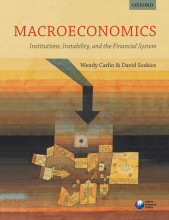Articles - Camerer
6 important questions on Articles - Camerer
Describe the ultimatum game
Describe the dictator game
Describe the fairness equilibrium
- Higher grades + faster learning
- Never study anything twice
- 100% sure, 100% understanding
Based on the predictions of standard game theory, how do you expect Proposers and Receivers to act in the ultimatum game if both players are income maximers?
How do Proposers and Receivers act in the laboratory experiments Camerer and Thaler describe?
How could the difference between game theoretic predictions and the findings in experiments be explained?
The question on the page originate from the summary of the following study material:
- A unique study and practice tool
- Never study anything twice again
- Get the grades you hope for
- 100% sure, 100% understanding































